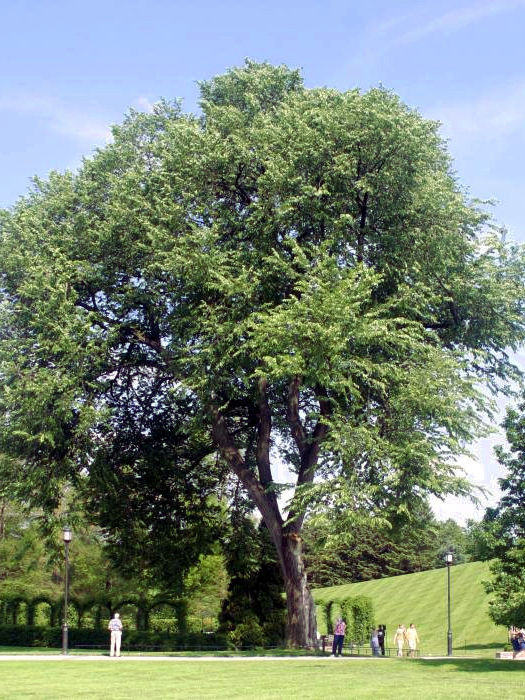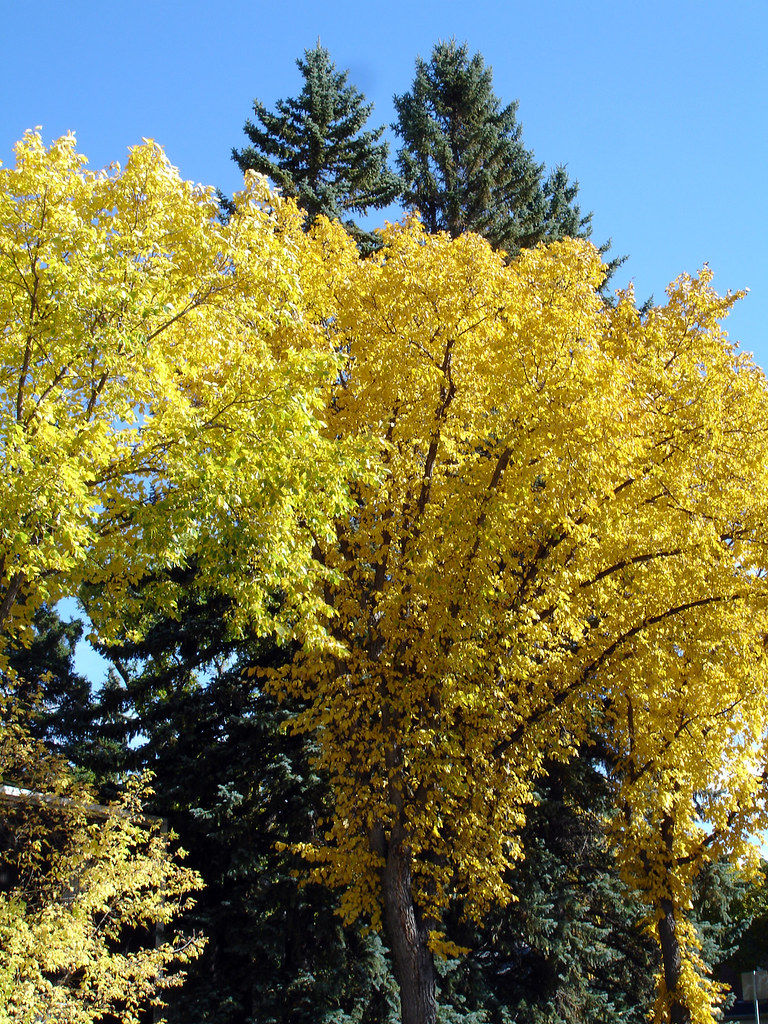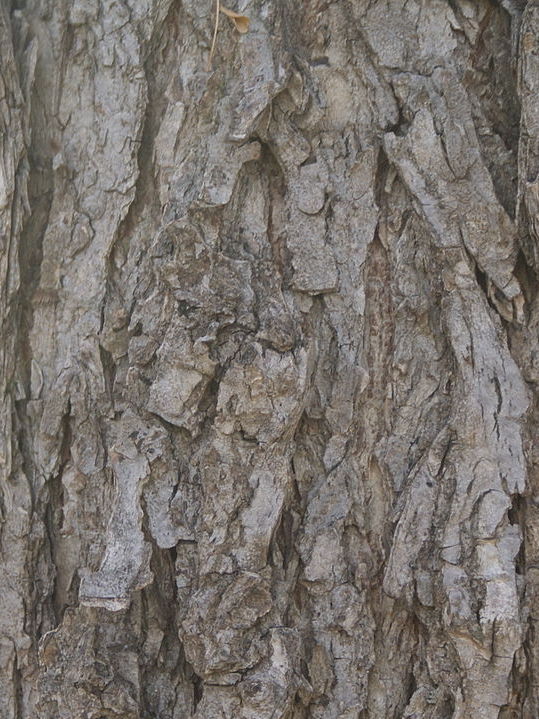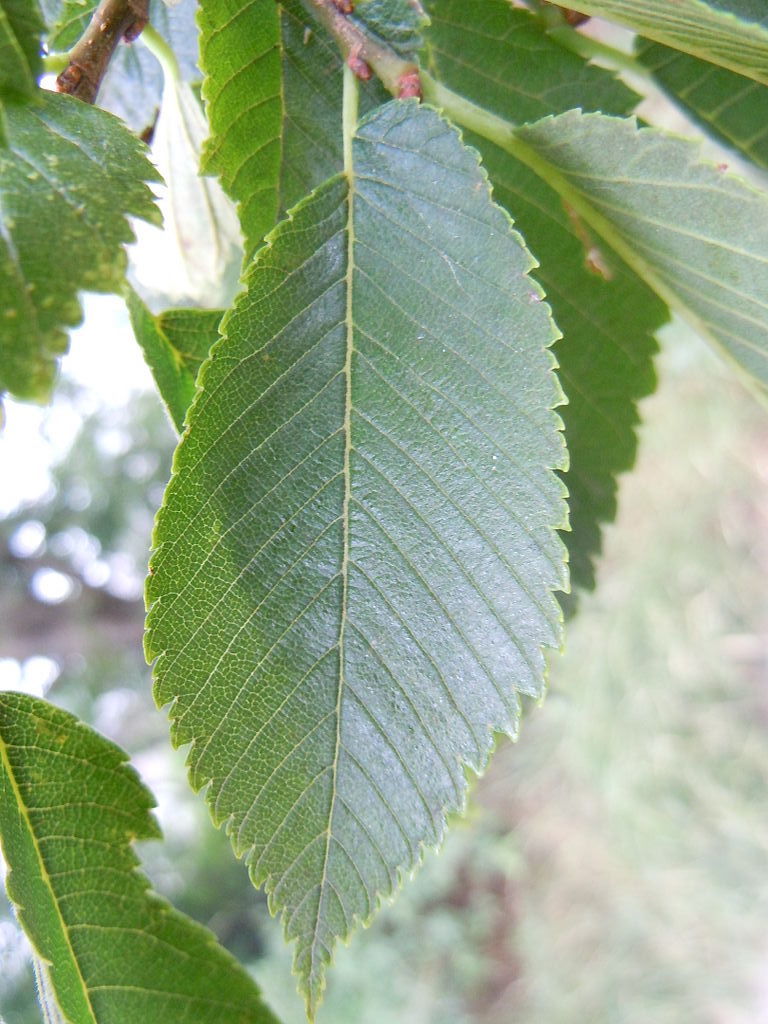American Elm (Ulmus americana)
The American elm is a medium sized tree with branches that arch like fountains and leaves that turn golden-yellow in the fall. Its leaves have an oval-pointed shape and are asymmetrical: from the center vein, one side of the leaf is shorter than the other. In the 19th century, the American elm was the most popularly planted tree and almost every street was lined with it. Unfortunately, in the 1950s Dutch elm disease began to spread in the U.S. and killed the majority of these trees. Therefore, it is now recommended to plant hybrids that are resistant to this disease, such as 'New Harmony' and 'Valley Forge.'
Family: Ulmaceae (Elm)
Characteristics: The 3-6 inch long leaves have an oval-pointed shape and are toothed, leathery, and dark green. From the center vein, one side of the leaf is shorter than the other. In the fall, leaves turn a golden yellow. Insignificant small green flowers that bloom in early spring give way to samaras (double winged seeds). This tree has a broad rounded shape with spreading, slightly drooping, branches. It grows 60-80 feet high and 30-50 feet wide.
Foliage: Deciduous (leaves lost seasonally)
Geographic Origin: Eastern North America (native)
Cultivation Notes: Requires medium maintenance. Does best in full sun, though can tolerate part shade. Prefers moist and well-drained soils. This tree is very susceptible to Dutch elm disease, therefore it is recommended to plant hybrids instead.
Number on Campus: 17
Sources: Dirr, Morton Arboretum, Missouri Botanical Garden




